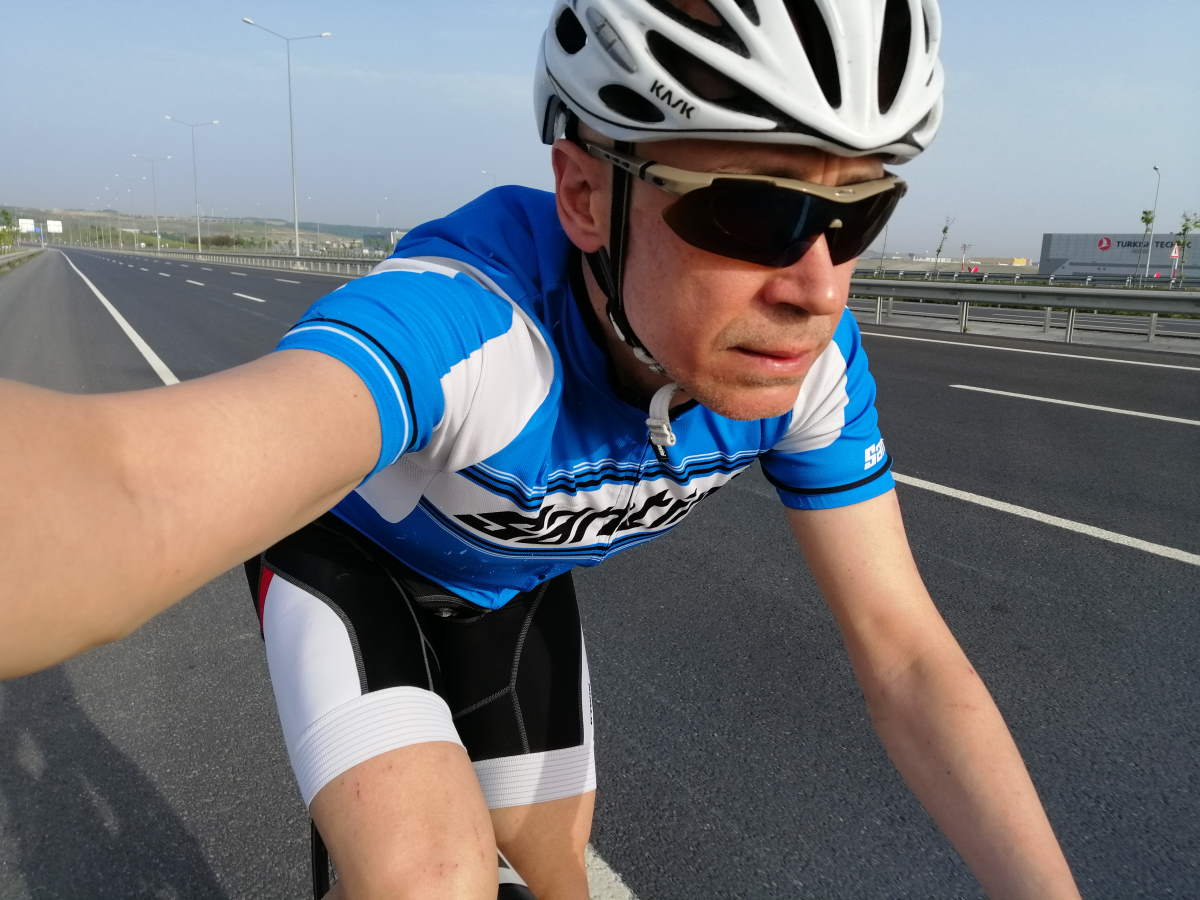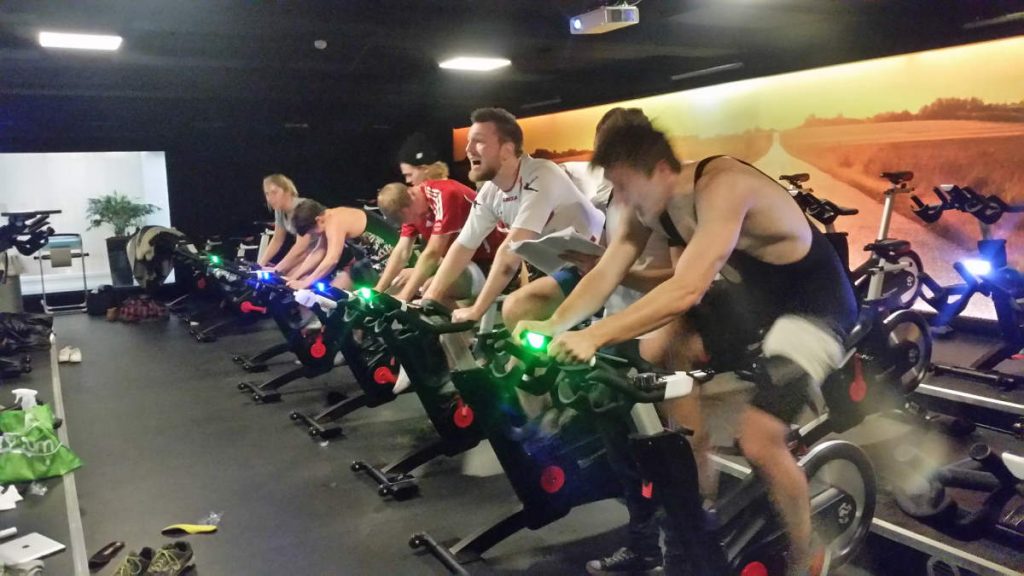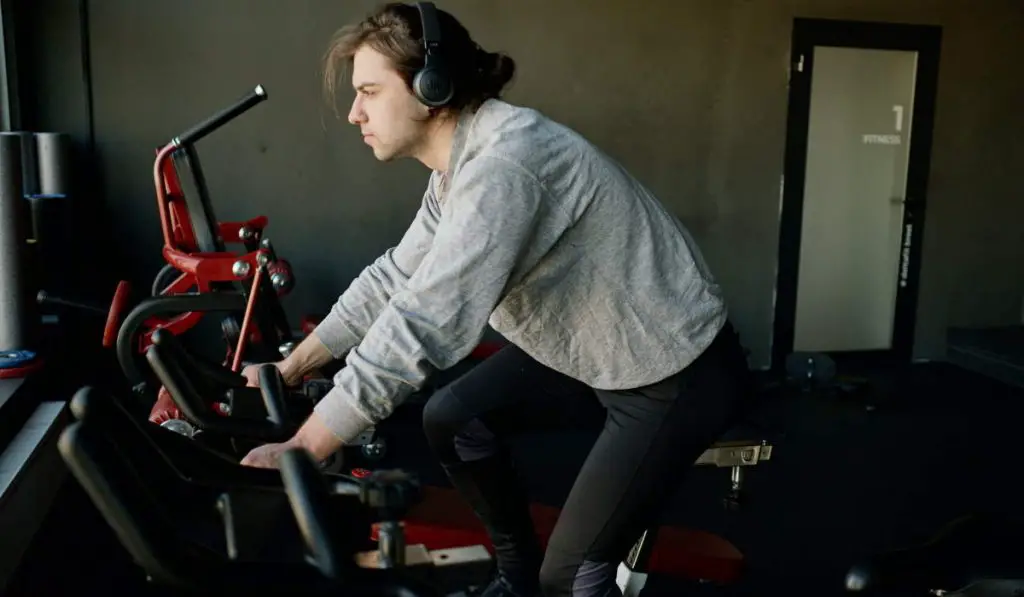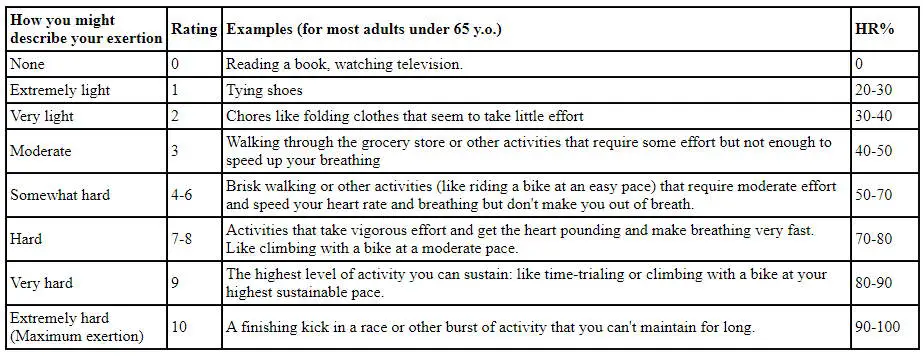The Rate of Perceived Exertion (RPE) or the Borg Rating of Perceived Exertion is a way of measuring physical activity intensity level. In medicine, this is used to document the patient’s exertion during a test, and sports coaches use the scale to assess the intensity of training and competition.
The original Rate of Perceived Exertion (RPE) scale – A.K.A. Borg scale (6-20)
The original scale introduced by the Swedish psychologist Dr. Gunnar Borg, rated exertion on a scale of 6-20; as a simple way to estimate heart rate – multiplying the Borg score by 10 gives an approximate heart rate for a particular level of activity. It is based on the physical sensations a person experiences during physical activity, including increased heart rate, increased respiration or breathing rate, increased sweating, and muscle fatigue.
The seemingly odd range of 6-20 is to follow the general heart rate of a healthy adult by multiplying by 10. For instance, a perceived exertion of 12 would be expected to coincide with a heart rate of roughly 120 beats per minute.

- How you might describe your exertion: None
- Borg rating: 6
- Examples (for most adults under 65 y.o.): Reading a book, watching television.
- How you might describe your exertion: Extremely light
- Borg rating: 7 to 8
- Examples (for most adults under 65 y.o.): Tying shoes.
- How you might describe your exertion: Very light
- Borg rating: 9 to 10
- Examples (for most adults under 65 y.o.): Chores like folding clothes that seem to take little effort.
- How you might describe your exertion: Fairly light
- Borg rating: 11 to 12
- Examples (for most adults under 65 y.o.): Walking through the grocery store or other activities that require some effort but not enough to speed up your breathing.
- How you might describe your exertion: Somewhat hard
- Borg rating: 13 to 14
- Examples (for most adults under 65 y.o.): Brisk walking or other activities (like riding a bike at an easy pace) that require moderate effort and speed your heart rate and breathing but don’t make you out of breath.
- How you might describe your exertion: Hard
- Borg rating: 15 to 16
- Examples (for most adults under 65 y.o.): Activities that take vigorous effort and get the heart pounding and make breathing very fast. Like climbing with a bike at a moderate pace.
- How you might describe your exertion: Very hard
- Borg rating: 17 to 18
- Examples (for most adults under 65 y.o.): The highest level of activity you can sustain: like time-trialing or climbing with a bike at your highest sustainable pace.
- How you might describe your exertion: Extremely hard (Maximum exertion)
- Borg rating: 19 to 20
- Examples (for most adults under 65 y.o.): A finishing kick in a race or other burst of activity that you can’t maintain for long.

The simplified Rate of Perceived Exertion (RPE) scale (0-10)
The Borg scale is good to follow but it’s a little clumsy using the numbers 6 through 20. There are other RPE scales based on the Borg scale, one common version uses a simplified scale of 0 to 10:
- How you might describe your exertion: None
- RPE Rating: 0
- Examples (for most adults under 65 y.o.): Reading a book, watching television.
- How you might describe your exertion: Extremely light
- RPE rating: 1
- Examples (for most adults under 65 y.o.): Tying shoes.
- How you might describe your exertion: Very light
- RPE rating: 2
- Examples (for most adults under 65 y.o.): Chores like folding clothes that seem to take little effort.
- How you might describe your exertion: Fairly light
- RPE rating: 3
- Examples (for most adults under 65 y.o.): Walking through the grocery store or other activities that require some effort but not enough to speed up your breathing.
- How you might describe your exertion: Somewhat hard
- RPE rating: 4 to 6
- Examples (for most adults under 65 y.o.): Brisk walking or other activities (like riding a bike at an easy pace) that require moderate effort and speed your heart rate and breathing but don’t make you out of breath.
- How you might describe your exertion: Hard
- RPE rating: 7 to 8
- Examples (for most adults under 65 y.o.): Activities that take vigorous effort and get the heart pounding and make breathing very fast. Like climbing with a bike at a moderate pace.
- How you might describe your exertion: Very hard
- RPE rating: 9
- Examples (for most adults under 65 y.o.): The highest level of activity you can sustain: like time-trialing or climbing with a bike at your highest sustainable pace.
- How you might describe your exertion: Extremely hard (Maximum exertion)
- RPE rating: 10
- Examples (for most adults under 65 y.o.): A finishing kick in a race or other burst of activity that you can’t maintain for long.
Notes
1. How to calculate your heart rate percentage?
First, you have to learn your resting and maximum heart rates. Then we can calculate P% of heart rate as below:
HR = min. heart rate + ((Max. heart rate – min. heart rate) x P / 100)
Let’s assume that your max. heart rate is 180 and resting heart rate is 60. We can calculate 80% heart rate as:
HR = 60 + ((180 – 60) x 80 / 100) = 156
Your heart rate at 80% should be 156. The formula gives your min. heart rate at 0%, and your max. heart rate at 100%.
Sources
- Borg Scale on Wikipedia
- Centers for Disease Control and Prevention
- intervalsforcardio.com
- The Borg Scale of Perceived Exertion on Harvard School of Public Health website
- BikesOnline Carlsbad: Your Premier Cycling Destination in San Diego County - June 15, 2025
- Top 19 fastest Paris-Roubaix editions - April 14, 2025
- Fausto Coppi in Africa [A Very Rare Photo] - January 4, 2025



